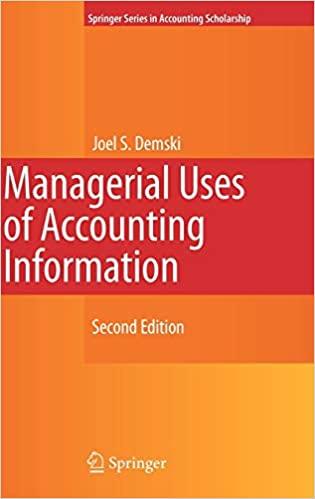14. possible misspecification of overhead LLA Empire Electronics (EE) is an assembler of custom electronic components. It
Question:
14. possible misspecification of overhead LLA Empire Electronics (EE) is an assembler of custom electronic components.
It faces an opportunity to bid on a particular assembly. Direct material is estimated to cost 14, 000 and direct labor 112, 000. Variable overhead is allocated at 61.75% of direct labor cost. A special consulting fee of 18, 000 will also be incurred if the assembly project is taken on. (An incremental cost of 213, 160 is thus implied.) This fee reflects the standard retainer arrangement EE has with a human resources consulting firm. Labor is in short supply and EE will hire 2 temporary laborers if it successfully bids on the project. The consulting firm does the necessary search, interviewing, applicant testing, and so on, all for a price of 9, 000 per employee supplied. The temporary laborers will leave after the assembly work is completed, with no additional compensation. Moreover, the 61.75% datum stems from a recent cost analysis. The overhead account contains mainly labor support activities, fringe benefits, supervision, inventory control, payroll administration and so on. The data listed below were used to produce this estimate.
t OV (000) DL$ (000) no. of hires 1 5,915 11,326 120 2 5,922 11,339 120 3 6,600 12,074 160 4 5,648 11,127 110 5 3,903 8,976 100 6 3,097 6,275 70 7 4,491 8,625 110 8 6,556 11,863 180 9 5,321 9,837 110 10 4,579 9,689 80 At this point a member of the management team questions the cost estimate of 213, 160. Research indicates the consulting fee is always charged to manufacturing overhead. So a question of double counting arises.
(a) Is it correct to combine the regression estimate of variable overhead with the 18, 000 datum?
(c) Carefully explain the difference between the original break-even calculation and that which you performed in
(b) above.
(d) Suppose q3 = 800 units. What is the minimum price for this to be an interesting product?
(e) Again presuming 0 ≤ q3 ≤ 2, 000, what is the incremental cost of the third product?
Step by Step Answer:






